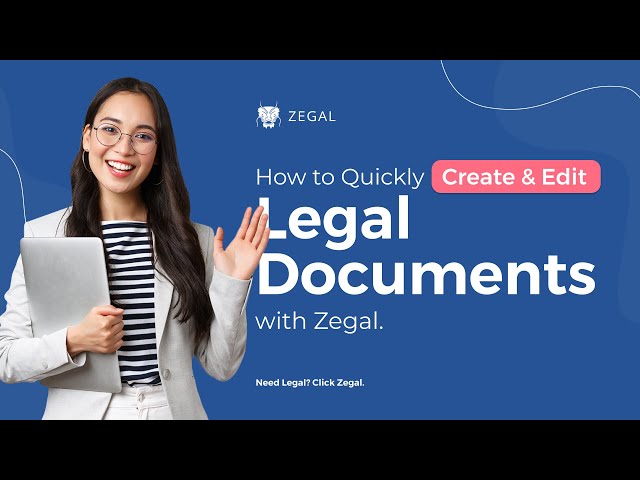How to generate an Africa Shareholders Agreement
What is a shareholders agreement?
A Shareholders’ Agreement, also known as a Founders’ Agreement, is a contract among the founders of a company to regulate their rights as shareholders of the company.
In a Shareholders’ Agreement, the founders agree on rules for the future transfer of shares and the level of consent required for making significant decisions.
A Shareholders’ Agreement protects the founders of a business by imposing restrictions on the transfer of issued shares, so that when one founder leaves, the sale of his shares is subject to other founders’ consent, or the remaining founders have the chance to buy his shares before someone outside the company does.
What is the role of a Shareholders Agreement template?
A shareholder Agreement helps ensure that shareholders are treated fairly, and their rights are protected. It also helps in mitigating the risk of any conflicts that could occur in the future.
The Shareholders’ Agreement helps facilitate cooperation among the shareholders and ultimately aids in increasing the likelihood of a company becoming successful.
When creating an agreement, some of the essential provisions to include in a shareholders agreement template are:
Name, address, and shareholding of each investor
Personal and identifying details of the shareholders need to be mentioned along with their duties, responsibilities, and entitlements.
Detailed governance and management provisions
A shareholders’ agreement must have governance provisions about how the company will be managed. This can include details of how officers will be appointed, how official meetings such as board and shareholders meetings will operate, and how decision-making will occur among the shareholders.
Restrictions on share transfer
If any shareholder wants to leave the company or sell their shares, a Shareholders’ Agreement provides measures to deal with share transfer provisions and restrictions.
For instance, this can include clauses stating that the first right to purchase a shareholder’s share will be given to existing shareholders and only then to third parties.
Generally, there are two options:
Tag-along
The tag-along option is where a shareholder intends to sell their shares to a third-party buyer and will allow fellow shareholders to “tag along” with the sale, i.e., sell their own shares to the same third-party buyer on the same terms.
This ensures that where a good deal is made by a shareholder (typically a majority shareholder), remaining shareholders (typically minority shareholders) can exit on the same terms.
Drag-along
The drag-alone option is where a majority shareholder (or a group of shareholders) intends to sell his shares to a third-party buyer.
The drag-along provision gives them a right to force remaining shareholders (typically minority shareholders) to sell their shares to the same buyer on the same terms. This ensures that the third-party buyer can acquire the entire company, which could be crucial in negotiating the sale.
The drag-along mechanism is a drastic measure, and minority shareholders must understand its implications before agreeing.
Confidentiality obligations
This prevents the disclosure of information regarding finance, sales, and the company’s future plans, which might have serious negative consequences for an organisation’s growth.
Founder vesting
It is very common in venture-backed startups for the founder to be treated differently from investors.
A founder may agree to have ‘vested shares’, which means some or all of the founder’s shares are not fully ‘owned’ by the founder until they have earned them (by working for a set period or hitting specific milestones).
If a founder leaves a company, the unearned portion of their shares is either cancelled or returned to the company.
Deadlock clause
A deadlock is when two or more shareholders cannot agree on certain key matters.
Deadlock arises when shareholders’ meetings are repeatedly inquorate (unable to proceed) because one group refuses to attend, votes down, or abstains from a resolution proposed by the other group. There must be provisions on how a deadlock will be resolved so the company can move forward.
Restrictive covenants
Shareholders of a company are restricted from becoming a shareholder or competing or enticing away customers during the period they are shareholders and until a specified period after they cease to become one in a company by the restrictive covenant clause.
Confidentiality/NDA clause
Shareholders are likely to have access to valuable confidential information about the company.
While the general law states that a person who has received information in confidence cannot use it to take an unfair advantage, most will not rely on this alone.
A Shareholders’ Agreement with confidentiality provisions, or an additional NDA, is best for a company to keep information confidential.
A dispute resolution mechanism
When disputes arise, a Shareholders’ Agreement can be a valuable tool to avoid and manage conflicts without reverting to extreme measures, like dissolving the company.
Investor protection
Investors often require the shareholders to agree to specific provisions designed to protect their position. For example, they might require performance targets or a board seat on the board of directors. These provisions are often found in a Shareholders’ Agreement.
Shareholder’s death or default
A mandatory offer of shares upon the death or liquidation of a shareholder ensures that the company shares will remain in the hands of the remaining shareholders.
In a Shareholders’ Agreement, the fair value of the shares is determined by the company’s auditors, or if the auditors decline instruction, by an independent accounting firm appointed by the company.
Founder vesting
Founder vesting is the concept that a founder’s total ownership in a company is agreed to in the present and earned over time, not that much unlike a salary or other time-based compensation. If a founder leaves a company, the unearned portion of their ownership is cancelled or returned to the company.
Things to consider when you set up a Shareholder’s Agreement
- Disputes: When disputes arise, there is often little in the general law that is of assistance. Sometimes, the only solution may be to dissolve the company, even if the company itself is successful. A shareholder’s agreement can be a handy tool in avoiding and managing such disputes. It can include provisions setting out a mechanism for the parties to resolve disputes without needing draconian measures such as dissolving the company. Sometimes, to resolve a dispute, one or more shareholders may agree to sell their shares to the other shareholders. A shareholder’s agreement will often include valuation provisions to ensure a precise valuation mechanism for those shares and avoid a further dispute regarding the price to be paid.
- Investor protection: Investors are taking a risk on their investment as they may not recover the monies they invested into the company, so they often require the shareholders to agree on specific provisions designed to protect their position. For example, they might need performance targets for the company to meet within a given time. If those targets are not met, the investor has the ability to require certain actions to be taken or has the opportunity to take control of the company. These provisions are often found in a shareholder’s agreement.
- Confidentiality: The shareholders are likely to have access to valuable confidential information about the company by reason of their involvement in the business. A shareholder’s agreement containing confidentiality provisions is the best way for a company to ensure that the shareholders will keep information about the agreement and about the company confidential during the life of the agreement and following its termination.
Who needs a Shareholders’ Agreement?
Ideally, all companies which have more than one shareholder should have a Shareholders’ Agreement in place to regulate the business and have the responsibilities and rules for running the company pinned down in writing. Some benefits of having a shareholder’s agreement are:
- A dispute resolution mechanism
When disputes arise, a Shareholders’ Agreement can be a valuable tool to avoid and manage conflicts without reverting to extreme measures, like dissolving the company. It can be a tool to help treat sensitive topics with concrete pre-determined measurements.
- Investor protection
Investors often require the shareholders to agree to specific provisions designed to protect their position. For example, they might require performance targets or a board seat on the board of directors. These provisions are often found in a Shareholders’ Agreement.
Are Shareholders Agreements legally binding?
Shareholders’ agreements are contracts. However, they must fulfil certain contractual requirements to be legally valid and binding.
Can Shareholders’ Agreements be reviewed or changed?
Yes, while shareholder’s agreement provides a solid foundation for businesses to move ahead, their terms can be reviewed and changed in the future, if all the parties onboard agree on the changes.
The needs of companies, businesses and even investors are ever-changing, and it is only apt that the agreements are changed accordingly as well.
How to remove users from a shareholders’ agreement?
Removing users from a shareholder agreement could be a lengthy process because it requires agreement from the majority shareholders. The removal can be done through the following steps:
- 1. Refer to the agreement of shareholders:
Shareholders of the company are subject to terms and conditions set by the company. This means that the shareholder’s agreement applies to all the shareholders. The shareholders of the company create the shareholder’s agreement. Therefore, it ensures that all shareholders are represented fairly. Referring to this agreement is helpful and necessary to break off a contract with a shareholder. You may also refer to the arrangement of shareholders to identify reasons for the removal of the shareholder. It can also be a basis for negotiation. - 2. Seek Legal Consultation
To prevent legal problems, guidance should be sought. Caution should be employed especially before taking any action without shareholder permission. Legal consultation is an intrinsic part of the process because despite seeming simple, it holds many intricacies. - 3. Claim majority amongst the shareholders
A majority that is required for the removal of a shareholder needs to be overwhelming. This means you may not be able to remove a shareholder with a simple majority of fifty percent. You will require at least 75% of shareholders’ favor for the removal. The shareholder should have less than 25% of the shareholders in their favor. The process of dismissing a shareholder can be done through a vote. - 4. Negotiate for the majority:
Sometimes you may not find a legal cause to remove a shareholder. In this case, the best option is to negotiate the majority in your favour. The majority opinion is indecisive in making any decision for the company. Therefore, if you do not already have the majority on your side negotiation is the best option to acquire it. - 5. Create a non-compete agreement:
Even after you have succeeded to secure the majority, you need to proceed with great caution. As the process can be complicated and troublesome, you would want to impose a non-compete agreement on the shareholders that will be departed. It is the final step in the removal of the shareholder. A non-compete agreement will ensure that the departing shareholder will not participate in a business that is a direct competition to your company. However, the non-compete agreement is only applicable for a set amount of days.
How is shareholders agreement different from Articles of Association?
While an article of association is a public document, a shareholders’ agreement is a private one that is signed between the shareholders of a company. Both are used to regulate the actions of a company and should be consistent with each other.
50% off a shareholders agreement
Sign up to Zegal and get a shareholders agreement for half price.
Stay compliant with the Zegal template library
Zegal legal template are meticulously crafted with the precision of AI and the expertise of seasoned human lawyers, providing a unique blend of speed and reliability.
You can trust that Zegal agreements are legally sound and fully compliant with current regulations.
Whether you're a startup, SME, or a larger enterprise, Zegal contract management will automate and speed up your legal processes.
Using Zegal will reduce risk, save money, and improve efficiency. Let us take care of the paperwork so you can focus on running your business.
Don’t compromise on speed or compliance. Stay secure, compliant, and efficient with Zegal.






